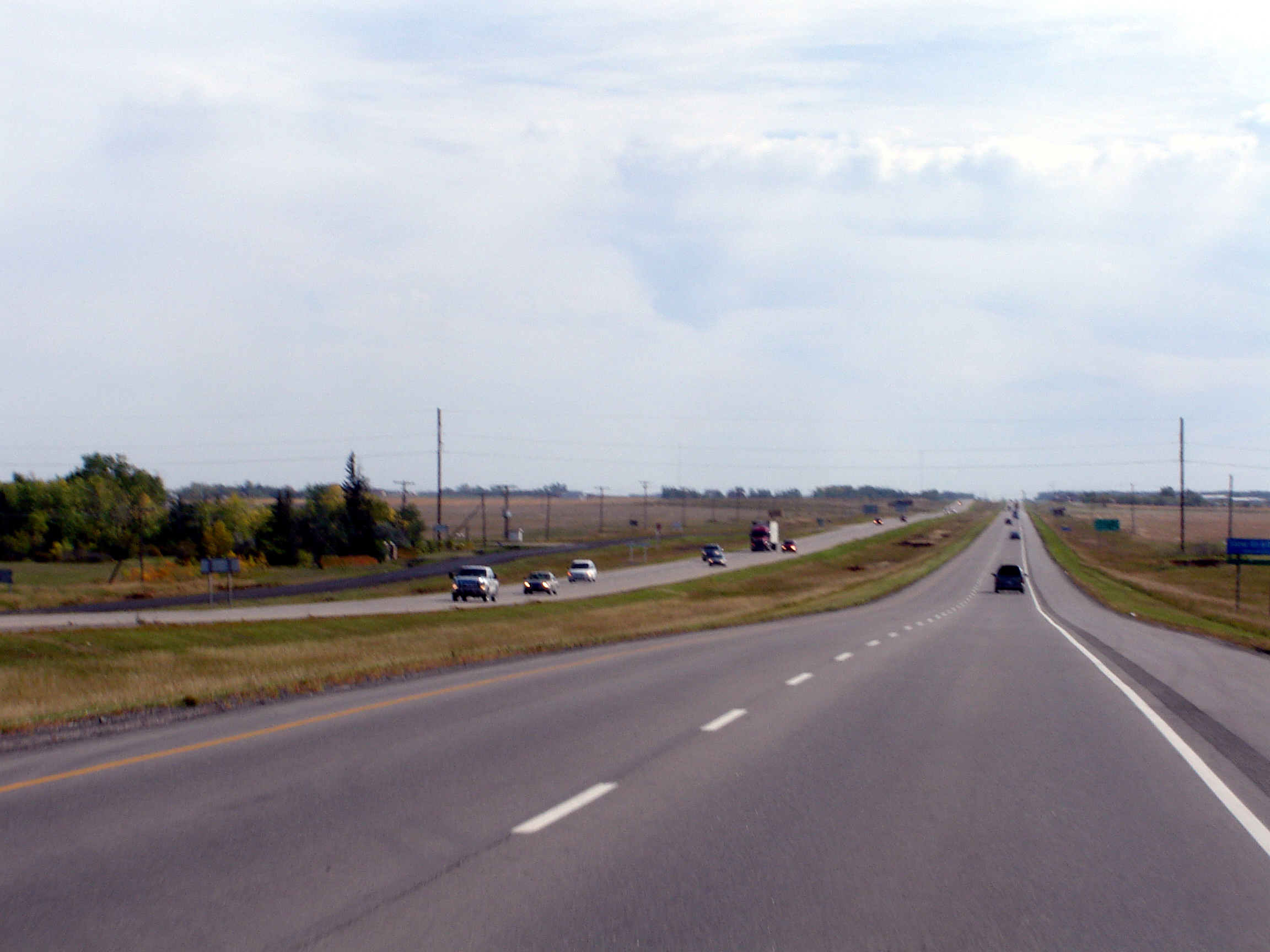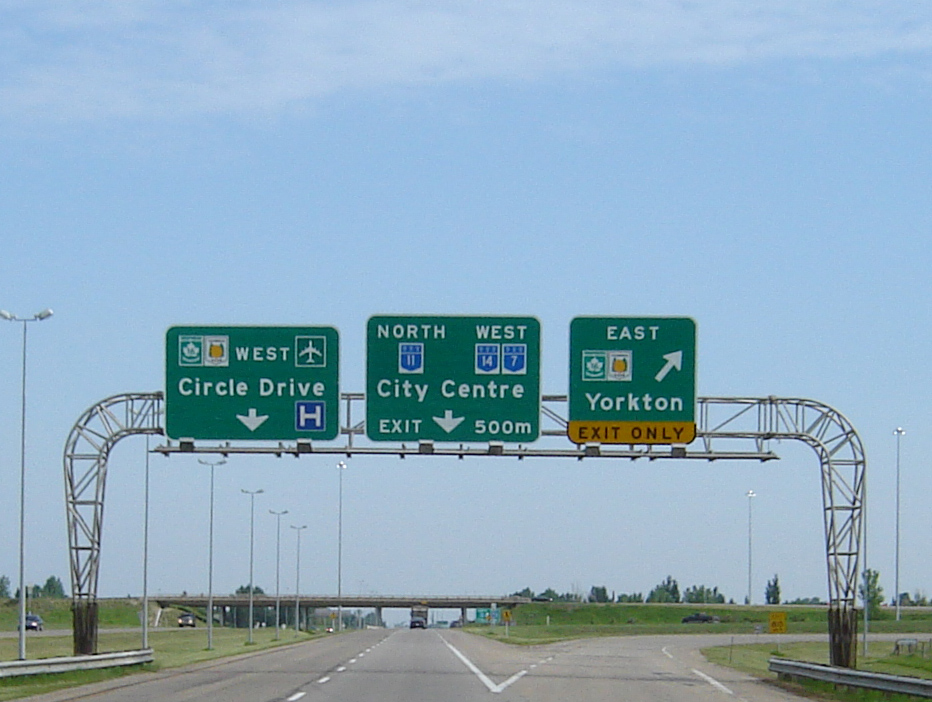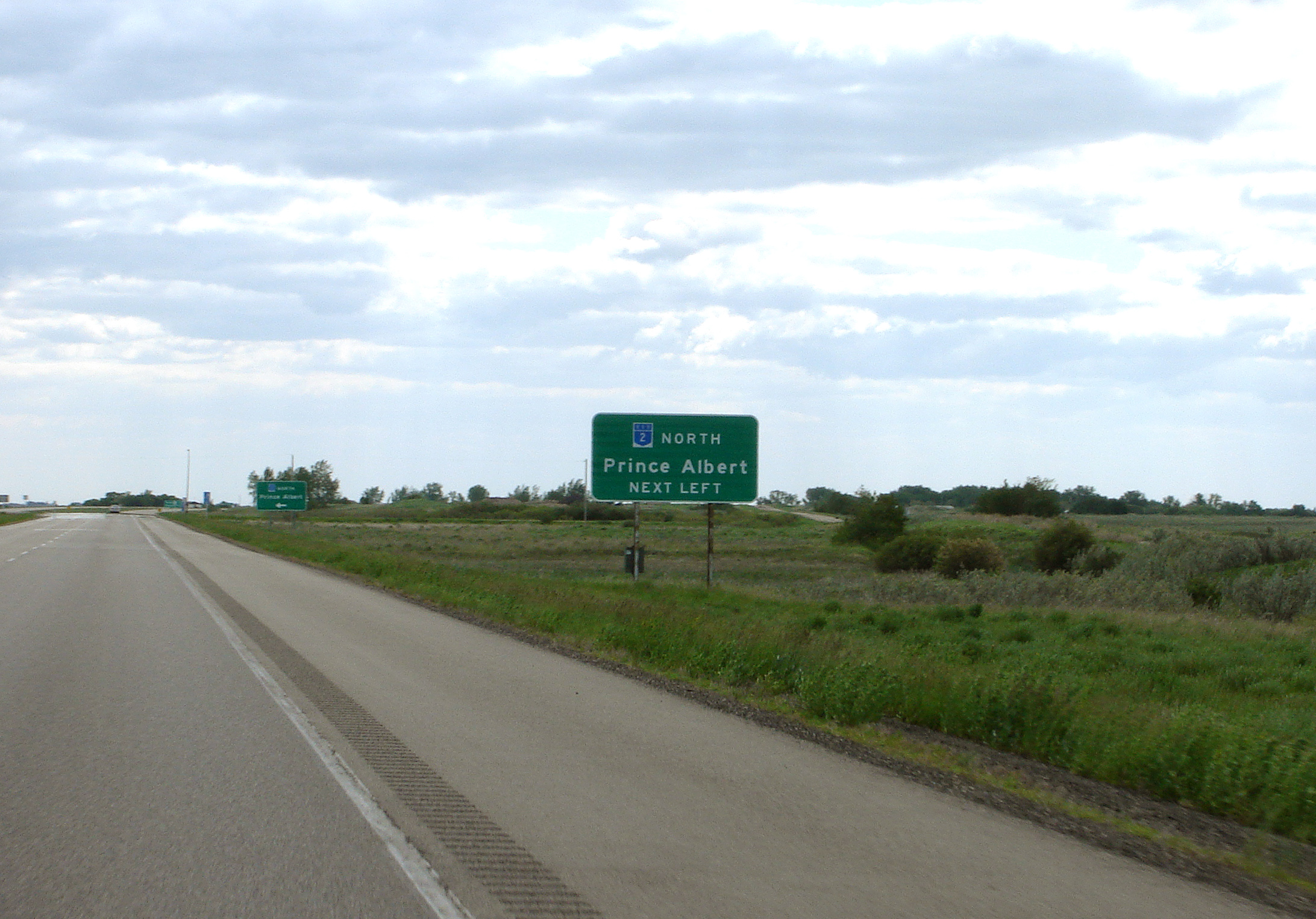|
Saskatchewan Highway 302
Highway 302 is a Numbered highways in Canada, provincial highway in the Provinces and territories of Canada, Canadian province of Saskatchewan. It runs from the northern terminal of the Weldon Ferry, which connects to Saskatchewan Highway 682, Highway 682 across the South Saskatchewan River, to a dead end near the Nisbet Provincial Forest. It is about long. Highway 302 goes westward from the South Saskatchewan River, passing near the communities of Birson, Fir Ridge, and Cecil, Saskatchewan, Cecil. It then enters the city of Prince Albert, Saskatchewan, Prince Albert as 15th Street. Within Prince Albert, Highway 302 connects with Saskatchewan Highway 2, Highway 2 and Saskatchewan Highway 3, Highway 3. West of Prince Albert, it passes through the Prince Albert Settlement and near the community of Lily Plain before ending. Highway 302 provides access to La Colle Falls and Saskatchewan River Forks Recreation Site. History Saskatchewan Highways and Transportation (SHT), now th ... [...More Info...] [...Related Items...] OR: [Wikipedia] [Google] [Baidu] |
Nisbet Provincial Forest
The Nisbet Provincial Forest is a provincially protected mixed-wood forest surrounded by Aspen parkland in North Central Saskatchewan, Canada. It consists of a north block north of the city of Prince Albert, Saskatchewan, and a south block between Duck Lake, Saskatchewan, MacDowall, Saskatchewan and Lily Plain, Saskatchewan. The forest drew Métis people (Canada), Métis and white settlers to the area during the 1860s to 1880s and was an important source of building materials and fuel in this period. Today it is a provincially protected area although cattle grazing and recreational use including cross country skiing, snowmobiling, hiking, and hunting in the area are permitted. The Louis Riel Trail runs through the south block of the Nisbet forest. The forest was named for James Nisbet (missionary), James Nisbet, a Presbyterian clergyman who established a mission at Prince Albert. See also * List of Saskatchewan provincial forests External links Presents an overview of the his ... [...More Info...] [...Related Items...] OR: [Wikipedia] [Google] [Baidu] |
Saskatchewan Highway 3
Highway 3 is a major provincial highway in the Canadian province of Saskatchewan. It runs from the Alberta border, where it continues west as Alberta Highway 45, to the Manitoba border, and then continues east as Highway 77. Highway 3 is about 615 km (382 mi.) long. The CanAm Highway comprises Saskatchewan Highways 35, 39, 6, 3, as well as 2. of Saskatchewan Highway 3 contribute to the CanAm Highway between Melfort and Prince Albert. Major communities that Highway 3 passes through are Prince Albert, Melfort, and Tisdale. Route description Travel continues west as Alberta Highway 45 at the Alberta – Saskatchewan border. The Saskatchewan portion of the route begins in the northwestern area of the aspen parkland ecoregion, north of Lloydminster the border city. Ttrembling aspen ''(Populus tremuloides)'' form bluffs (''small islands or shelter belts'') which are typical in this area. This area also marks the northernmost area of the Missouri Cotea ... [...More Info...] [...Related Items...] OR: [Wikipedia] [Google] [Baidu] |
Roads In Saskatchewan
Saskatchewan, the middle of Canada's three prairie provinces, has an area of and population of 1,150,632 (according to 2016 estimates), mostly living in the southern half of the province. Currently Ministry of Highways and Infrastructure operates over of highways and divided highways, over 800 bridges, 12 separate ferries, and one barge. There are also municipal roads which comprise different surfaces. Asphalt concrete pavements comprise almost , granular pavement almost , non structural or thin membrane surface TMS are close to and finally gravel highways make up over through the province. TMS roads are maintained by the provincial government department: Saskatchewan Highways and Transportation. In the northern sector, ice roads which can only be navigated in the winter months comprise another approximately of travel. Dirt roads also still exist in rural areas and would be maintained by the local residents. All in all, Saskatchewan consists of over of roads, the highes ... [...More Info...] [...Related Items...] OR: [Wikipedia] [Google] [Baidu] |
Transportation In Saskatchewan
Saskatchewan has a transportation infrastructure system of roads, highways, freeways, airports, ferries, pipelines, trails, waterways, and railway systems serving a population of approximately 1,132,505 (according to 2021 census) inhabitants year-round. It is funded primarily with local, rural municipality, and federal government funds. History Early European settlers and explorers in Canada introduced the wheel to North America's Aboriginal peoples, who relied on canoes, york boat, bateaux, and kayaks, in addition to the snowshoe, toboggan, and sled in winter. Europeans adopted these technologies as Europeans pushed deeper into the continent's interior, and were thus able to travel via the waterways that fed from the St. Lawrence River Great Lakes route and Hudson Bay Churchill River route and then across land to Saskatchewan. In the 19th century and early 20th century transportation relied on harnessing oxen to Red River carts or horse to wagon. Maritime transportation ... [...More Info...] [...Related Items...] OR: [Wikipedia] [Google] [Baidu] |
CanAm Highway
The CanAm Highway is an international highway that connects Mexico to Canada through the United States. It travels along U.S. Route 85 (US 85) and Interstate 25 (I-25), passing through six U.S. states (Texas, New Mexico, Colorado, Wyoming, South Dakota, North Dakota) and the Canadian province of Saskatchewan. The CanAm highway in Canada comprises Saskatchewan Highway 35 (SK 35), SK 39, SK 6, SK 3, and SK 2. The route continues south in Mexico as Mexican Federal Highway 45 (Fed. 45), and north in Canada as SK 102 but are not labeled the CanAm highway. History The CanAm highway was a concept begun in the 1920s. Route description The CanAm Highway follows US 85 from El Paso, Texas, for to the border between the United States and Canada. It continues north on SK 35 to Weyburn, Saskatchewan, where it switches to SK 39. Then it runs north to Corinne where it continues on SK 6 until Melfort. There it changes highways again, this time to follow SK 3. That ... [...More Info...] [...Related Items...] OR: [Wikipedia] [Google] [Baidu] |
North Saskatchewan River
The North Saskatchewan River is a glacier-fed river that flows from the Canadian Rockies continental divide east to central Saskatchewan, where it joins with the South Saskatchewan River to make up the Saskatchewan River. Its water flows eventually into the Hudson Bay. The Saskatchewan River system is the largest shared between the Provinces and territories of Canada, Canadian provinces of Alberta and Saskatchewan. Its watershed includes most of southern and central Alberta and Saskatchewan. Course The North Saskatchewan River has a length of , and a drainage area of . At its end point at Saskatchewan River Forks it has a mean discharge of . The yearly discharge at the Alberta–Saskatchewan border is more than . The river begins above at the toe of the Saskatchewan Glacier in the Columbia Icefield, and flows southeast through Banff National Park alongside the Icefields Parkway. At the junction of the David Thompson Highway (Highway 11), it initially turns northeast for b ... [...More Info...] [...Related Items...] OR: [Wikipedia] [Google] [Baidu] |
Ministry Of Highways And Infrastructure (Saskatchewan)
The Ministry of Highways is divided into the Operations, Policy and Programs, and Corporate Services Divisions and the Communications Branch. The ministry is the employer of over 1,476 employees diversified amongst 105 communities in Saskatchewan. The current Minister of Highways and Infrastructure is Jeremy Cockrill. Operations Division The Operation Division has the responsibility of maintaining of asphalt concrete pavements, of Road surface#Granular pavements, granular pavements, of Road surface#Thin membrane surface, thin membrane surface (TMS) highways, of Gravel road, gravel highways, of ice roads, bridges, large culverts, 12 Ferry, ferries, one barge and 17 northern airports. Operational maintenance includes surface repair activities like crack filling, sealing, and patching; snow and ice control; pavement marking; signing; and ferry operations. Along with engineering, construction and design of the provincial road network, the operations division provides reg ... [...More Info...] [...Related Items...] OR: [Wikipedia] [Google] [Baidu] |
Saskatchewan River Forks Recreation Site
Saskatchewan River Forks is a provincial recreation site in the Canadian province of Saskatchewan at the confluence of the North Saskatchewan and South Saskatchewan Rivers. The rivers, which have their headwaters in the Rocky Mountains, come together to form the Saskatchewan River. A major intersection when waterways were important to transportation on the Canadian Prairies, first with the fur trade and then during the riverboat era, today the Saskatchewan River Forks attract tourists, canoeists, and recreational fishermen. The recreation site, which is maintained by the province of Saskatchewan, is about east of Prince Albert and north of Weldon. Access is off Highway 302. The park is on the west side of the river fork and is heavily wooded with steep banks. There is a tourist picnic site, hiking trails, and historic markers. Saskatchewan River Forks history In 1692, Englishman Henry Kelsey — while working for the Hudson's Bay Company — was the first European to ... [...More Info...] [...Related Items...] OR: [Wikipedia] [Google] [Baidu] |
La Colle Falls
La Colle Falls Hydroelectric Dam is a partially complete hydroelectric dam built on the North Saskatchewan River near the city of Prince Albert, Saskatchewan. The dam is approximately east of the city in an area that is quite accessible. Construction started in 1909 and the partially completed project was abandoned in 1913 due to high costs and technical difficulties. The motivation of building the dam was to provide cheap power and attract business to the area. The partially complete project had cost nearly $3 million and nearly bankrupted the city in the process. The site is named after fur trader John Cole, who established a trading post near the rapids in 1776. In 2009, a proposal was made to conduct an archeological assessment of the site and propose the site be made a historic site. Prince Albert Tourism was also considering developing a tour to the site using water access. In 2007, an engineering thesis was written outlining how the site could be converted into a spa. ... [...More Info...] [...Related Items...] OR: [Wikipedia] [Google] [Baidu] |
Lily Plain
Lily Plain is an area in Saskatchewan, Canada, located approximately 20 kilometres west of Prince Albert, Saskatchewan Saskatchewan is a Provinces and territories of Canada, province in Western Canada. It is bordered on the west by Alberta, on the north by the Northwest Territories, on the east by Manitoba, to the northeast by Nunavut, and to the south by the .... In the area there is a community hall called "Lily Plain Community Hall", and in the parking lot for the hall are postboxes for residents in the area. The main access into this area is the Saskatchewan Highway 302W. Unincorporated communities in Saskatchewan {{Saskatchewan-geo-stub ... [...More Info...] [...Related Items...] OR: [Wikipedia] [Google] [Baidu] |
Prince Albert Settlement
A prince is a Monarch, male ruler (ranked below a king, grand prince, and grand duke) or a male member of a monarch's or former monarch's family. ''Prince'' is also a title of nobility (often highest), often hereditary title, hereditary, in some European State (polity), states. The female equivalent is a princess. The English language, English word derives, via the French language, French word ''prince'', from the Latin noun , from (first) and (head), meaning "the first, foremost, the chief, most distinguished, noble monarch, ruler, prince". In a related sense, now not commonly used, all more or less sovereign rulers over a state, including kings, were "princes" in the language of international politics. They normally had another title, for example king or duke. Many of these were Princes of the Holy Roman Empire. Historical background The Latin word (older Latin *prīsmo-kaps, ), became the usual title of the informal leader of the Roman senate some centuries before the tra ... [...More Info...] [...Related Items...] OR: [Wikipedia] [Google] [Baidu] |
Saskatchewan Highway 2
Highway 2 is a provincial highway in the Canadian province of Saskatchewan. It is the longest highway in Saskatchewan at 809 km (503 mi). The highway has a few divided sections but is mostly undivided. However, only about near Moose Jaw, near Chamberlain, and near Prince Albert are divided highway. Highway 2 is a major north-south route beginning at the Canada–US border at the Port of West Poplar River and Opheim, Montana customs checkpoints. Montana Highway 24 continues south. It passes through the major cities of Moose Jaw in the south and Prince Albert in the north. Highway 2 overlaps Highway 11 between the towns of Chamberlain and Findlater. This section of road is a wrong-way concurrency. The highway ends at La Ronge, where it becomes Highway 102. The highway started as a graded road in the 1920s which followed the grid lines of the early survey system and was maintained by early homesteaders of each rural municipality. Paving projects of the 1 ... [...More Info...] [...Related Items...] OR: [Wikipedia] [Google] [Baidu] |



